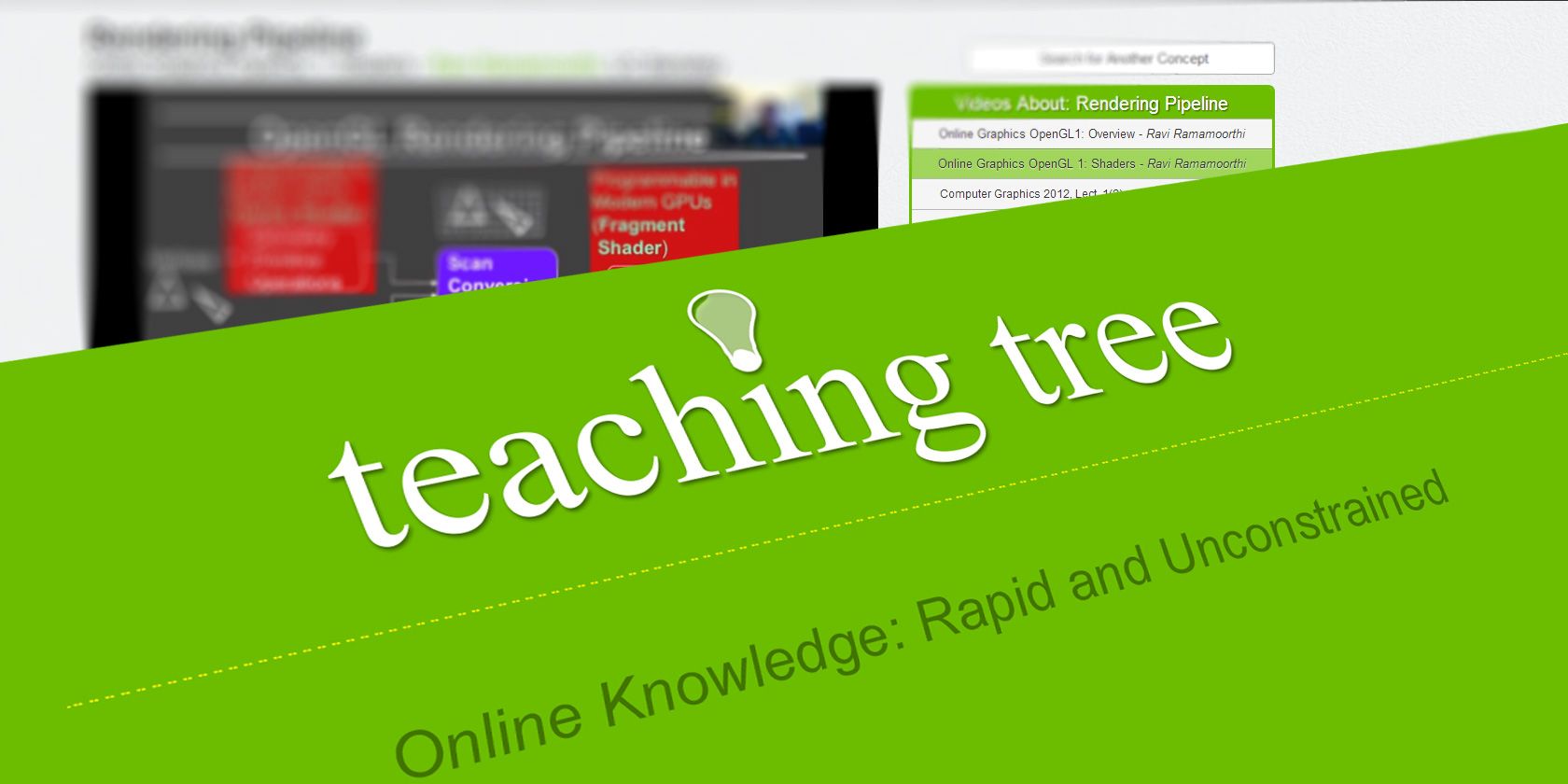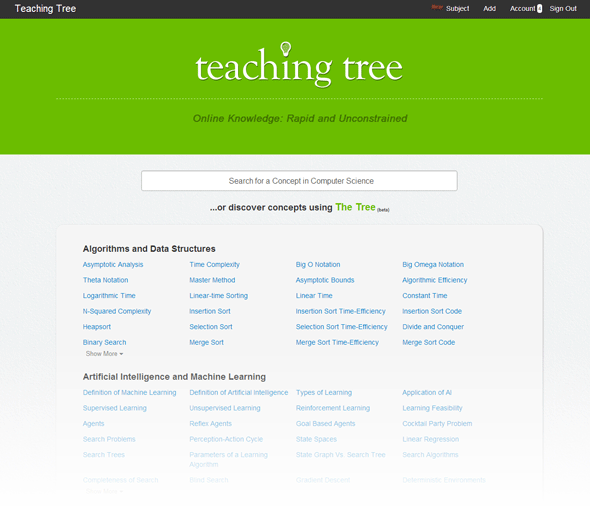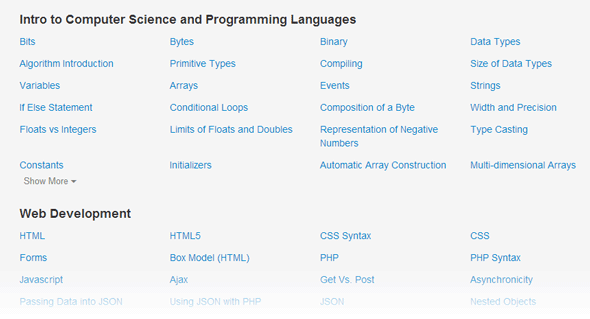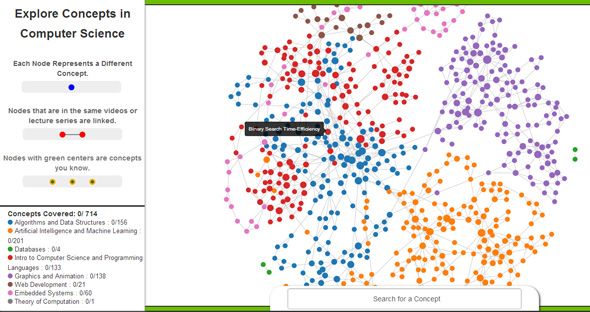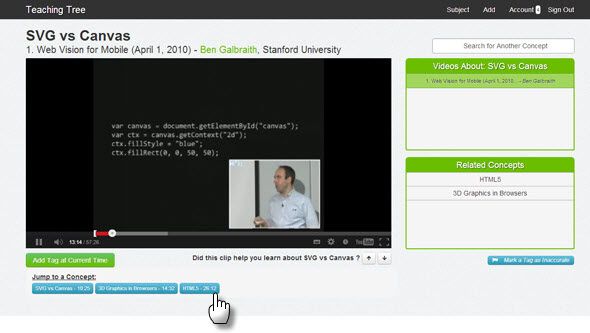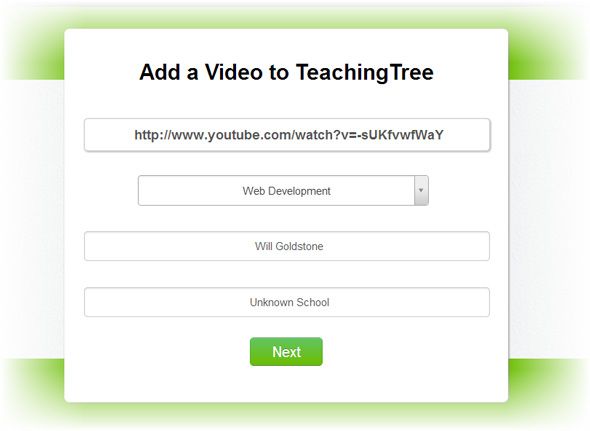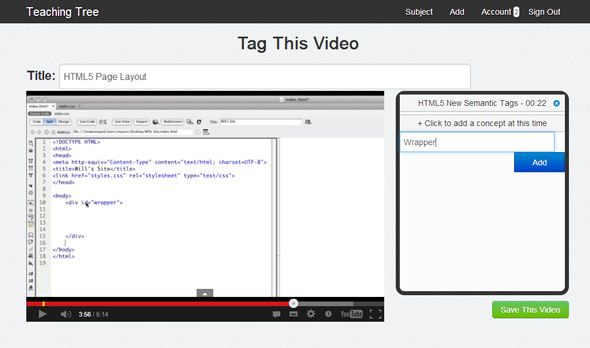Learning with the help of massive open online courses or YouTube videos has one slight problem -- there isn't anyone around to help you take shortcuts to the precise concept. You wade in and flounder around, because there's just so much information in a long video. If you come up for air, take a look at Teaching Tree. Teaching Tree handles the difficult part of taking you to the right concepts in the shortest time possible. It makes learning computer science with free educational videos easy as clicking on a timestamped tag.
It took me two stumbles to come to Teaching Tree. The first one was when I came across Code.org. Code.org is a non-profit umbrella program that seeks to spread computer education across the U.S. It includes the who's who of Silicon Valley and beyond. Code.org lists Teaching Tree as one of the learning resources you should look up.
How Can Teaching Tree Help With Online Learning?
Teaching Tree is a platform for collecting and contributing educational video content on computer science, math, and Ruby programming among others. There are more than 1200 "concepts" on the site so far. It is an open platform, so anyone can use it to assimilate knowledge on the subjects it promotes. Contributing educational videos is just the first part of the learning philosophy behind the website. Teaching Tree wants students to go to the exact explanations they need to quickly learn individual concepts. Video tutorials can be long, and all of it may not be relevant for a student who simply wants to understand a specific concept explained in a long lecture. Through user-generated and timestamped tags, Teaching Tree enables the student to jump to the exact moments in the video that are right for him or her.
Content on Teaching Tree is sourced from many MOOC (Massive Open Online Course) resources on the Web including YouTube which hosts most of the free tutorials. The video content has been built up with the contributions of teachers and students who signed-up to use the site. Now, it could be you. So, let's sign-up and see how it all comes together.
Three Ways to Discover and Learn New Concepts
Teaching Tree gives you three routes to discover videos that explain what you want to learn:
1. Use the index which lists all the topics presently on the website. Click on Show more to uncover all the lessons. Areas covered include -- algorithms and data structures; artificial intelligence and machine learning; embedded systems; graphics and animation; computer science and programming languages; and web development.
2. Use the search bar which auto-suggests results on the basis of your keyword.
3. Use the visual The Tree. The Tree is a visual representation of all courses on the site. Each color coded node represents a concept and you can discover related ones by clicking or with a mouse-over on the connected nodes.
The Learning Video
As the screenshot shows you, the video page is not only about the lecture. There are some unique features here that make this learning platform unique.
- You can tag the precise point where the lecturer starts explaining a particular concept or term. The video is timestamped for everyone else who wants to learn about that concept.
- You can click on the tags that have been entered by other users and jump to the point where the concept gets explained.
- You can vote on concept explanations. With each vote, you can help future students find the best clips for each topic or help to remove mislabeled or poor explanations.
- From the boxes on the right, you can go to other videos and related concepts.
Add Your Own Educational Videos and Benefit Everyone
Teacher Tree is powered by submissions from the community of teachers and students. The number of videos around some topics can (and do) fall short of expectations. But Teaching Tree is about unconstrained learning, so why not aggregate the best computer science videos you come across on YouTube. The whole community benefits from your hard work and you also get to have a permanent place to keep all the video tutorials neatly organized. The process is simple:
- Add a video by pasting the YouTube link.
- If the name of the lecturer and university is available with the site, the last two fields get automatically filled up.
- In the next page, you can change the title and add concepts. The video automatically pauses at the point when you click +Click to add concept at this time. You can add the tag with the automatic timestamp and move on.
Teaching Tree keeps score of your contribution to the site and that's a nice way to rack up some brownie points.
In Conclusion -- Making Online Learning Better
Tagging videos around concepts and explanations is a nice idea for quick learning. There are gaps on the growth path which I hope the developers behind it give some attention to. For instance, you cannot yet see all the videos you have contributed to the site. Something similar to a YouTube playlist would help to aggregate videos around a specific subject and allow students to use it as a comprehensive learning platform. The site does say it is working on a feature to allow professors the ability to create custom courses. The challenge will be to maintain the quality because YouTube is an open portal that lets in the good and the bad. The voting system should be useful to keep a check on the irrelevant videos.
Teaching Tree is a fine example where crowdsourcing of knowledge is being used for the greater good. It can also be a great platform for flip teaching. Do you agree? If you are learning to code, do you know any similar platform that allows you to contribute videos on computer science? Drop names in the comments.

